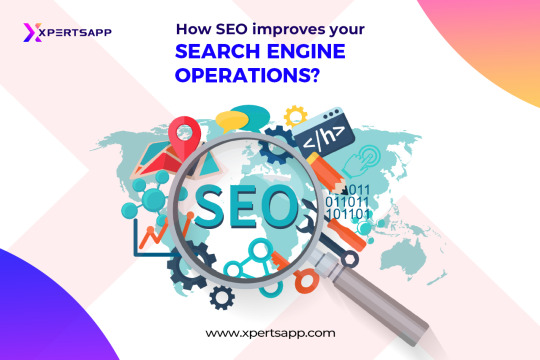#Shopify blog theme
Text
Creating and Developing Shopify Websites: A Guide
Shopify is a popular e-commerce platform that allows individuals and businesses to create their own online stores. It's easy to use and offers a wide range of features and tools to help you design and develop your website. In this article, we'll walk you through the steps of creating and developing a Shopify website.
To create a Shopify website, you'll first need to sign up for an account. You can do this by visiting the Shopify website and clicking the "Start free trial" button. You'll be prompted to enter your email address and create a password. Once you've completed this step, you'll be taken to the Shopify admin dashboard.
The next step is to choose a theme for your website. Shopify offers a wide selection of free and paid themes that you can use to customize the look and feel of your site. You can browse through the available themes by visiting the "Themes" section of the Shopify admin dashboard. Once you've found a theme that you like, you can install it by clicking the "Add theme" button.
I will create a shopify store or customize a shopify website CLICK HERE

After you've installed your theme, you'll need to customize it to match your brand and style. You can do this by visiting the "Customize" section of the Shopify admin dashboard. Here, you'll be able to make changes to the layout, colors, fonts, and other elements of your theme. You can also add your own logo and images to the site.
Now that your website's design is set up, it's time to add products to your store. You can do this by visiting the "Products" section of the Shopify admin dashboard. Here, you can create new products, add product descriptions, and upload images. You can also set up collections and organize your products into categories.
Next, you'll need to set up payment and shipping options for your store. You can do this by visiting the "Settings" section of the Shopify admin dashboard. Under the "Payments" tab, you can choose from a variety of options, including credit card, PayPal, and bank transfer. Under the "Shipping" tab, you can set up shipping rates and zones.
I will create a custom shopify theme of your choice for your shopify website CLICK HERE

Once you've completed all of the above steps, you're ready to launch your website! You can do this by visiting the "Online store" section of the Shopify admin dashboard and clicking the "Launch website" button. Your website will now be live and accessible to visitors.
Shopify is a powerful and user-friendly platform for creating and developing e-commerce websites. With its easy-to-use tools and wide range of features, it's a great option for anyone looking to start an online store. By following the steps outlined in this guide, you'll be able to create a professional and functional website that meets the needs of your business.
#shopify#ecommerce#webdevelopment#development#business#online#customized#shopify themes#websites#blogger#book blog#moneymaking#make money today#i need money#money#financial#finance
2 notes
·
View notes
Photo

If you are running or planning to run your offline jewelry business online, you first need to have a website. To create an effortless and easily customizable website, you must go ahead with the Shopify jewelry theme.
Visit:- https://3icolors.com/shopify-jewelry-themes/
0 notes
Text
Shopify has a blog problem, this creates a really simple and straightforward opportunity for freelance designers/programmers

Earlier this year I settled the editorial decisions I needed for a lot of blogging going forward, and recently I've experimented (repeatedly) with the idea of having a blog on a separate platform, or using Shopify's system.
Having two sites would allow me to blog on a WordPress site, but creates... two sites, therefore complicates everything more. More maintenance, design, etc. etc.
I am actively seeking to make my life easier so I am foregoing two sites and learning to live with the limitations.
A personal struggle to the surprise of no one.

You can use WordPress and thread Shopify through it via the "buy" button, which is a shortcut for small stores and/or larger stores where you are very comfortable in WordPress.
You cannot use Shopify and thread WordPress through it.
Which is a shame.
Because Shopify's native blog platform is fucking horrible.

An independent graphic designer who can program, or a programmer who can design, cannot solve Shopify's problems.
They are inherent to the system and likely built on legacy code Shopify doesn't want to update because it'll cost a fortune.
I'll just be mad about this until the market forces them to address this opportunity and they revamp their blogging platform. That's fine.
Or maybe decades will pass and they won't. That's... fine too. I guess.

I am rambling this out because if I were in the business of freelance graphic design and/or programming I would jump on this immediately. I used to be and always shared opportunities with friends and it was fun and I kinda miss that aspect of the life.
I'm not in that business, and I have in-house programming, please don't pitch me, but do consider pitching... pretty much everyone with a Shopify site and a blog as Phase 01 of your plan, and everyone who has a Shopify site and does not have a blog as Phase 02 of your plan.
Here is what I would tackle:
Shopify blogs have two structures: "blog" and "blog post".
A blog in Shopify is essentially a category in WordPress, with more limitations, such as, a blog post can only be in a single "blog". That sucks but it means your life as a designer/developer gets more interesting.
Most Shopify themes come out of the box with 1 "blog" and 1 "blog post" template. They are exceptionally simple, usually. I would build a few test templates and offer them to clients "these will be modified to fit your direct style."
For some reason -- I'm guessing focus -- most blogs in Shopify have the image on top. If you structure "image on the left, image on the right" as options you can offer clients, you've just tripled their layout capabilities.
For another reason, I don't know why, but almost all shopify blog post templates I've seen do not have sidebars. Which is insane?! You can control that from the fucking "blog post" template so it would be an easy win.
You could work around the "a post can only be in one blog on Shopify" issue by having a sidebar that pulls the latest 3 (or 5 or whatever) posts as links for other blogs on the site: TEST SITE has 3 blogs. When you're looking at a post on BLOG 01, in the sidebar, you see a link to the latest post on BLOG 02 and BLOG 03. Similarly, when you're looking at a post on BLOG 02, the sidebar has the latest post from BLOG 01 and BLOG 03 (and so on)
The template I use, off the shelf, uses the Shopify's user name and details for the author of the blog. Once a blog post is created, in Shopify, you cannot alter the author. This is dumb as fucking rock salt on slug popcorn. But, again, systematic, I'm pitching ideas on ways around it -- exclude this and just use a CUSTOM DATA field to allow the Shopify owner to pick the relevant author. This cuts down on the need for extra Shopify users, tremendously, and builds in the opportunity for WordPress-style author footers on blog posts.
Emulate the very common filtering on products -- dropdowns, sorting mechanisms -- with tags on a sidebar on BLOG templates. This will be tricky because you cannot hook into the Search & Discovery function, but it's absolutely no where near impossible. And would be amazingly useful.

Overall Shopify is a decent platform with significant advantages.
There blogger apps but holy shit that is so unnecessary. If they were a one-time-fee, it would be fine, but they aren't, they're generally $20+/month.
I'm not interested in paying for a service that ties me into another tech system that I am fucked if they go out of business, jack up their prices, introduce a feature I don't like, or remove a feature I do like.
For something like a blog system.
Which relies HEAVILY on very structured, single-built, near-infinitely-reused templates.

A low effort, high yield opportunity exists for independent designer/programmers to come up with a suite of designs and say "hey with some very simple modifications, we can take 1 of the following, apply it to your store, and dramatically increase your in-site blogging opportunities."
You start with a base "blog post" template and a base "blog" template and then every time someone hires you to add a feature to theirs, using Shopify's core tech -- you're just applying paint -- you now have a second set of templates.
Recycle forward.
One time fee per client -- likely low, but again effort is low since 90% of the code is re-used -- and each time you secure a client, you have opened a networking door.

Just make sure you include instructions and/or a premium service for when the customer upgrades their theme version -- "occasionally your theme author will upgrade, and this may get lost... so do the following to bring it back and/or we'll handle it for you for $X and Y-days notice."
Business opportunities are everywhere.
Good luck!
I repeat don't add me to your pitch list, I have a programmer in-house, but use this idea to make a business or extend yours!
This isn't financial advice, it is annoyed rambling!
#shopify#small ecommerce#small business#web design#ecommerce design#blogging#shopify blogging#graphic design#blog design
18 notes
·
View notes
Text
What is Search Engine Optimization (SEO) And How Exactly Does it Work?

Search Engine Optimization (SEO) is one of the best marketing strategies to provide long-lasting results in terms of traffic to your site. Having that in mind, you may ask, “How does search engine optimization work?” If you ask an expert SEO consultant: It is easier to know how it works once you know about the actual tactics of SEO to develop a certain amount of traffic for your website. Furthermore, you will understand what SEO (search engine optimization) is and how it works for your digital presence to gain more traffic.
Click Here to get the best SEO Services.
What is Search Engine Optimization (SEO)?
You’ve heard that SEO service can boost your website’s ranking on Search engines and increase traffic, but you need more clarity on how it operates or what areas to concentrate on. Discover what every digital marketer needs to know about SEO by reading on. “Search Engine Optimization” often known as SEO, is the practice of obtaining visitors via unpaid, editorial, or natural search results in search engines. It seeks to raise the position of your website in search results pages. Remember that the more individuals view a website, the higher it appears on the list.
Numerous diverse tasks go into effective SEO, including:
Finding appropriate terms with high potential for search traffic
Creating valuable content of the finest quality and optimizing it for both consumers and search engines
Including relevant links from reputable, high-ranking websites
Evaluating the outcomes
(SEO) Search Engine Optimization marketing is one of the most beneficial tools to gain organic traffic for your website.

What are the Fundamentals of Search Engine Optimization?
Knowing how to get your brand, website, or company noticed by searchers is an essential skill for anybody working in digital marketing. The best SEO service providers conduct business online, and keeping up with the best SEO solutions and trends can assist your website stay on top of your game. Although SEO constantly changes in small ways, its core principles remain constant. The best SEO service providers may divide SEO service into three main pillars or components that you must be aware of and practice regularly:
Technical Optimization:
It is the process of finishing tasks on your website that aren’t directly related to content but are intended to boost SEO. Behind the scenes, activities are frequent including Website functions like loading speed, theme, and many more.
On-Page Optimization:
On-page optimization is the procedure you employ to ensure the information on your site is appropriate and offers a beautiful user experience. A content management system can help you accomplish this by choosing the proper keywords to target inside your content. Additionally, many other components are involved in On-page Optimization, including image optimization, meta tags, and descriptions for every webpage of your website. It can quickly be done with the help of effective content management systems. Content management systems like WordPress, Wix, Drupal, Joomla, Magento, Shopify, and Expression Engine are typical examples.
Off-Page Optimization:
Off-page optimization is raising your site’s ranks in search engines by engaging in activities off-site of your website. Backlinks, which help to establish the site’s reputation, are a significant factor in this. However, many forms of backlinks come to use while the best SEO company in USA and most regions implement off-page strategies for SEO link building, like profile listing, business listing, forum commenting, blog commenting, and guest posting.
How SEO Improves Your Search Engine Operations?
They use search engines when someone has a question and wants to look up the answer online. Search engine algorithms are computer programs that indicate through data to provide users with the precise results they want. Search engines use algorithms to identify websites and choose which ones to rank for a particular keyword. Search engines go through three stages to find information: crawling, indexing, and ranking. However, Crawling is the discovery stage, indexing is the filing stage, and ranking is the retrieval stage.
Crawling:
The Crawling is the initial action. Search engines send out web crawlers to discover new pages and collect data. These web crawlers are sometimes known as robots or spiders. They aim to find new websites that are available and to frequently check previously viewed pages to determine if the material has changed or been updated. Search engines use links they’ve already found to crawl web pages. When a search engine searches your homepage, it will look for another link to follow and may follow the link to your new blog post if you have a blog post connected.
Indexing:
The indexing process comes next. A search engine determines whether or not to use the content it has crawled during the indexing process. A search engine will include a crawled web page in its index if it is worthy. At the end of the ranking process, this index is employed. A web page or other piece of material that has been indexed is filed and saved in a database so that it can be retrieved later. Most websites that offer specific and valuable information are indexed. A website could be excluded from the index if:
Its content is regarded as duplicates.
Its content is regarded as being of low quality or spam.
No one could crawl over it.
There were no inbound links to the page or domain.
Ranking:
SEO consulting services recommend that the ranking comes as the third and ultimately most crucial phase. Only once crawling and indexing are finished can order take place. Your website can be ranked once a search engine has crawled and indexed it. Search engines use more than a hundred ranking factors to categorize and rank content, and they all fall under one of the three SEO pillars: technical, on-page, or off-page Optimization. For the best SEO company, Search engines employ a variety of signals to determine how to rank websites, as follows:
Presence of keywords in the title tag:
Whether or not there is a use of the term or a synonym on the page and in the title tag
Web page loading time:
Whether the website is mobile-friendly and loads quickly
Website Reputation
Refers to how well-regarded the web page and website are for the subject we search for.
Conclusion:
SEO is optimizing web pages for search engines such as Google or another search engine. The best strategy to rank your pages at XPERTSAPP as the best SEO service provider is through holistic SEO, which focuses on optimizing every component of your website. Avoid using black-hat SEO techniques because doing so will eventually hurt your rankings. Instead, focus on sustainable SEO while keeping your user in mind; you will gain over time. Our Team of experienced SEO services and experts has distinct strategies to boost your rankings on search engines organically.
#seo services#search engine optimization#digital marketing#search engine marketing#seo#website optimization#on page seo
4 notes
·
View notes
Text
Seamless Transition: Best Practices for Website Migration to Shopify

In the ever-evolving landscape of e-commerce, staying competitive requires not just a robust online presence but also adaptability to emerging platforms. As businesses strive to enhance user experience, streamline operations, and optimize sales, many are turning to Shopify for its user-friendly interface, extensive customization options, and powerful marketing tools. However, migrating an existing website to Shopify can be a daunting task if not approached strategically. In this comprehensive guide, we'll delve into the best practices for a seamless transition to Shopify, ensuring minimal disruption to your online business.
Thorough Planning and Preparation:
Before embarking on the migration process, it's crucial to conduct a thorough assessment of your current website. Identify all existing content, including product listings, images, blog posts, and customer data. Take inventory of any custom features, integrations, or third-party apps that may need to be replicated or replaced on the new platform. Establish clear goals and timelines for the migration process to keep it on track.
Choose the Right Shopify Plan:
Shopify offers a range of plans tailored to different business needs, from startups to enterprise-level corporations. Assess your requirements in terms of product catalog size, expected traffic volume, and desired features to select the most suitable plan. Consider factors such as transaction fees, credit card rates, and additional services offered within each plan.
Data Migration and Integration:
Transferring your existing data to Shopify accurately is crucial for maintaining continuity and avoiding disruptions to your business operations. Utilize Shopify's built-in migration tools or third-party apps to seamlessly import product listings, customer information, and order history. Ensure compatibility with any existing integrations or third-party services your business relies on, such as payment gateways, shipping providers, and accounting software.
Design and Customization:
One of the key advantages of Shopify is its customizable design options, allowing you to create a unique and visually appealing storefront. Choose a Shopify theme that aligns with your brand identity and offers the features you require. Customize the design elements, layout, and color scheme to reflect your brand's personality and enhance user experience. Leverage Shopify's drag-and-drop editor and CSS customization capabilities to fine-tune the design to your liking.
Optimize for SEO:
A successful website migration should not only maintain your existing search engine rankings but also provide opportunities for improvement. Prioritize SEO best practices throughout the migration process, including:
Properly redirecting old URLs to their corresponding new URLs using 301 redirects to preserve link equity and prevent 404 errors.
Updating meta tags, headers, and image alt texts to optimize for relevant keywords and improve search engine visibility.
Submitting updated sitemaps to search engines to ensure they crawl and index your new Shopify site efficiently.
Implementing schema markup to enhance the appearance of your site's search results and provide rich snippets to users.
User Testing and Quality Assurance:
Before making your Shopify site live, conduct thorough testing to identify and address any issues or inconsistencies. Test the functionality of all features, including product pages, navigation menus, checkout process, and payment gateways, across different devices and browsers. Solicit feedback from beta users or employees to uncover any usability issues or bugs that may have been overlooked.
Launch and Post-Migration Optimization:
Once you're confident in the stability and functionality of your Shopify site, it's time to go live. Monitor closely for any post-migration issues, such as broken links, missing images, or discrepancies in data. Implement tracking tools such as Google Analytics to monitor site traffic, user behavior, and conversion rates. Continuously optimize your Shopify site based on performance metrics and user feedback to maximize its effectiveness in driving sales and achieving your business objectives.
In conclusion, migrating your website to Shopify can be a transformative step in enhancing your online presence and driving business growth. By following these best practices and approaching the migration process with careful planning and attention to detail, you can ensure a seamless transition that preserves your existing assets while unlocking the full potential of the Shopify platform.
2 notes
·
View notes
Text
How to Turn Your Online Business Dreams into Reality


Introduction: The Digital Frontier of Entrepreneurship
Selecting a Niche and Business Model: The Foundation of Success
Building Your Online Platform and Brand: Your Digital Headquarters
Creating High-Demand Products and Services: Delivering Value to Your Audience
Implementing Effective Marketing Strategies: Attracting Targeted Traffic
Diversifying Revenue Streams for Maximum Profits: Building Financial Stability
Optimizing for Maximum Profitability Long-Term: Building a Sustainable Business
Conclusion: Turning Dreams into Reality
True successful story
Introduction: The Digital Frontier of Entrepreneurship
In today's digital age, the rise of the internet and technology has revolutionized the way we do business. It has opened a world of opportunities for entrepreneurs to start and run their own businesses online. Online businesses offer flexibility, scalability, and the potential for global reach. This comprehensive guide will provide you with a step-by-step framework for building a profitable online business from the ground up. Whether you want to start a side business or build a full-time online empire, follow this ultimate guide to turn your idea into a thriving, sustainable online business. With focus, grit, and commitment to continuous improvement, you can build the profitable online business of your dreams.
Selecting a Niche and Business Model: The Foundation of Success
The foundation of every successful online business is choosing a profitable, in-demand niche and a business model tailored to your goals. Select a niche you're passionate about; this will make creating content a breeze. Conduct thorough keyword research to assess search volume and demand. Join relevant online communities to connect with your audience and understand their needs. Evaluate direct competitors in the niche and aim for less saturated niches or unique angles. Consider affiliate marketing potential, as some niches offer higher commissions. Assess opportunities to create multiple products and monetize in diverse ways. Examples of popular online business niches include health, fitness, personal finance, pet care, tech, travel, content marketing, home design, spirituality, language learning, and more.
Choose a business model that complements your niche and provides multiple income stream opportunities. Many successful online businesses incorporate 3-4 monetization models. Some of the best online business models to consider include:
1. Blogging: Make money with display ads, affiliates, and branded products.
2. Online Courses: Sell your knowledge and expertise as courses.
3. Dropshipping: Curate and sell products without inventory.
4. Affiliate Marketing: Earn commissions promoting other companies' products.
5. Information Products: Sell online books, templates, checklists, and more.
6. Virtual Services: Provide consulting, freelancing, coaching, or other services.
7. Subscription Membership Site: Offer exclusive content or tools for a monthly fee.
8. E-commerce Store: Sell physical products, merchandising, and more.
Your choice should complement your niche and offer multiple income streams. Many successful online businesses incorporate 3-4 monetization models.
Building Your Online Platform and Brand: Your Digital Headquarters
Your website or blog will serve as the headquarters for your online business. Invest time upfront in creating an optimized, professional-looking platform. Purchase a domain name that matches your brand, ideally a .com if available. Select reliable web hosting with optimal speed and uptime. Install WordPress or ecommerce platforms like Shopify or WooCommerce. Design an on-brand, mobile-responsive theme that conveys your style. Include essential pages like Home, About, Contact, Services, Blog, and Shop. Set up email marketing and analytics to capture leads and track traffic data. Create visually branded assets such as logos, color palettes, fonts, and graphics. Ensure a cohesive user experience across all touchpoints. If you lack web development skills, consider hiring a freelance designer to bring your vision to life. Continually optimize your website for higher traffic, leads, and sales over time. This includes technical enhancements, user experience improvements, and page speed optimizations.
Creating High-Demand Products and Services: Delivering Value to Your Audience
The key to running a profitable online business is consistently creating products and services that deliver extreme value to your audience. Popular digital products you can create include online courses, eBooks, guides, checklists, software, premium memberships, virtual events, video tutorials, templates, and more. When brainstorming products, look for opportunities to simplify lives, save time, educate, entertain, or improve outcomes for your target customers. Leverage your expertise and tap into the skills of others to create premium offerings.
High-value services like consulting, freelancing, coaching, and more can also be extremely lucrative. Promote your services through your website and social platforms. Structure your offerings to passively earn income over time, such as online courses that continually generate sales vs. 1-on-1 services that require ongoing effort. Deliver an excellent user experience across your products and relentlessly optimize based on feedback to foster raving fans who refer others.

Implementing Effective Marketing Strategies: Attracting Targeted Traffic
Once your online platform and offerings are ready, it's time to start attracting targeted traffic using proven marketing tactics. A diverse marketing mix is key. Some of the top strategies include:
1. Content Marketing: Create engaging blog posts, videos, and visual content.
2. SEO: Optimize your website for search engines through on-page optimization and link-building.
3. PPC Ads: Utilize platforms like Google, Facebook, Instagram, and YouTube for pay-per-click advertising.
4. Email Marketing: Build your email list with lead magnets, newsletters, and automation.
5. Social Media Marketing: Employ organic and paid tactics to engage your audience.
6. Affiliate Marketing: Recruit others to promote your products and earn commissions.
7. Influencer Partnerships: Collaborate with relevant influencers in your niche.
8. Live Events: Host local meetups or virtual events to connect with your audience.
9. Podcast Guest Appearances: Grow your authority and reach new audiences.
10. Retargeting Ads: Remarket to previous site visitors across the web.
Start by focusing on 1-3 core channels, then expand your efforts over time. Pay-per-click and social ads can help quickly scale an audience, while SEO and content creation tend to be most cost-effective in the long-term. Leverage tools like Google Analytics, Facebook Business Suite, and landing page builders to optimize results across all campaigns. Don't hesitate to enlist help from digital marketing agencies and specialists.
Diversifying Revenue Streams for Maximum Profits: Building Financial Stability
Generating multiple streams of revenue is key for building a highly profitable online business. Diversification reduces risk and provides stability as each income channel goes through ups and downs. Here are some of the most lucrative online business revenue models:
1. Product/Service Sales: Your core monetization stream. Ensure competitive yet profitable pricing.
2. Advertising: Display ads, sponsorships, native advertising, etc. Set up Google Ad Manager.
3. Affiliate Marketing: Promote other company's products for commissions. Join affiliate networks.
4. Memberships/Subscriptions: Offer exclusive benefits, content, or tools for a monthly fee.
5. Events: Sell tickets for online or in-person events and training programs.
6. Dropshipping: Curate and sell products without holding inventory.
7. Physical Merchandise: Sell branded products with print-on-demand services.
8. Consulting/Freelancing: Sell your skills and expertise through 1-on-1 services.
9. Tip Jars/Donations: Allow fans to tip or donate to show support.
Aim to generate income from both active efforts like service packages and passive streams like online courses that earn as you sleep. Automate processes wherever possible to scale income without increasing workload proportionally. Reinvest profits back into growing your business and diversifying income channels to create an unstoppable snowball effect over time.



Optimizing for Maximum Profitability Long-Term: Building a Sustainable Business
Launching a profitable online business is an important first step. However, creating systems and processes that enable high profitability long-term is vital for sustaining growth. Here are some best practices for optimizing operations and profitability:
- Obsessively track KPIs and metrics for all marketing channels and funnels. Analyze data to optimize underperforming areas.
- Create excellent customer support systems. Provide prompt, personalized support to increase satisfaction and referrals.
- Automate repetitive tasks wherever possible with tools like Zapier. Automate lead collection, customer onboarding, analytics, inventory management, etc.
- Systematize your product creation process to quickly test and validate new product ideas, then scale those that resonate.
- Document your systems and processes so future hires can replicate them. This includes SOPs for customer service, product fulfillment, etc.
- Build a skilled team over time by hiring virtual assistants, freelancers, agencies, and eventually full-time employees. Focus on higher-level strategy.
- Maintain work-life balance as a long-term entrepreneur. Make time for adequate rest, leisure, and self-care to avoid burnout.
By staying agile, embracing innovation, and relentlessly providing value to your audience, you can build an online business that delivers meaningful income for decades to come.



Conclusion: Turning Dreams into Reality
Starting and running a profitable online business takes consistent effort and persistence. However, by zeroing in on a niche, selecting the right model, crafting high-value offerings, implementing diverse marketing strategies, diversifying your revenue streams, and optimizing for maximum efficiency, you can build an online business that provides freedom and fulfillment for years to come. Remember to stay obsessively focused on understanding and serving your target audience. Combine your passion with grit, resilience, and creativity. With the right mindset and business foundations in place, you have immense potential to build a thriving online business that stands out and makes a lasting impact. The time to stop dreaming and start taking action is now. Follow this comprehensive guide to turn your online business idea into reality, step-by-step. You can build an online empire that allows you to live life on your terms. The possibilities are truly endless if you commit to continuous learning and improvement. Let this guide spark the fire within and set you on the path to online business success. Start pursuing your online entrepreneur dream today.


True successful story
To illustrate the principles and strategies discussed in this comprehensive guide, let's delve into the inspiring true story of Pat Flynn and his online business, Smart Passive Income.
Smart Passive Income - About Pat Flynn
Background:
Pat Flynn was once an aspiring architect who unexpectedly found himself laid off during the economic downturn in 2008. Faced with uncertainty, he turned to the online world to seek alternative income sources. His journey began with a blog, which he aptly named Smart Passive Income (SPI).
Selecting a Niche and Business Model:
Pat recognized that there was a significant demand for information about creating online businesses and generating passive income. He was passionate about sharing his experiences, both successes and failures, and helping others navigate the world of online entrepreneurship. Pat's chosen niche was personal finance, but his business model extended beyond blogging.
Building Your Online Platform and Brand:
Pat invested in creating a professional-looking platform for SPI. He purchased a domain name, set up reliable web hosting, and designed an appealing website. His commitment to providing value was evident through the content he produced on his blog, podcast, and YouTube channel. His brand, Smart Passive Income, became synonymous with transparency, authenticity, and actionable advice.
Creating High-Demand Products and Services:
One of Pat's significant successes came from his creation of online courses and informational products. He developed courses on topics like email marketing, affiliate marketing, and podcasting, leveraging his expertise and audience trust. These products delivered immense value to his audience and contributed significantly to his income.
Implementing Effective Marketing Strategies:
Pat's marketing strategy was built on content marketing, podcasting, and email marketing. He consistently produced high-quality blog posts and podcasts, which not only attracted a dedicated audience but also positioned him as an industry expert. His email list grew as he offered valuable lead magnets and nurtured his subscribers.
Diversifying Revenue Streams for Maximum Profits:
Pat's income streams diversified over time. In addition to course sales, he earned from affiliate marketing, book sales, and speaking engagements. He also ventured into software development, creating tools like the Smart Podcast Player. This diversification provided stability and mitigated risk.
Optimizing for Maximum Profitability Long-Term:
Pat was relentless in optimizing his operations. He regularly analyzed data and user feedback to improve his products and content. His team expanded as the business grew, allowing him to focus on strategic decision-making. Pat prioritized work-life balance, emphasizing family and well-being.
Conclusion:
Pat Flynn's journey from unexpected job loss to the creation of a successful online business, Smart Passive Income, serves as an inspiring real-life example of the principles discussed in this guide. His dedication to providing value, commitment to continuous improvement, and willingness to diversify income streams are key takeaways for anyone aspiring to build a thriving online business. Pat's story reminds us that with the right mindset and a clear vision, online entrepreneurship can lead to a fulfilling and prosperous career.


Read the full article
#business-model#guide#marketing#niche#online-business#products#profitability#revenue#services#Success
5 notes
·
View notes
Text
How to Start Selling on the Internet: What Is E-Commerce?
https://sciencespies.com/humans/how-to-start-selling-on-the-internet-what-is-e-commerce/
How to Start Selling on the Internet: What Is E-Commerce?

Do you want to start selling products online but don’t know how? In this blog post, we will discuss e-commerce and how to get started. E-commerce is the process of buying and selling goods and services over the Internet. It has become a popular way for businesses to sell their products and services, and it is estimated that e-commerce sales will reach $4 trillion by 2020. In this blog post, we will discuss the basics of e-commerce and provide tips on how to get started.
Is it difficult to operate an online store?
These days it’s very easy, and that’s thanks to easy-to-use CMS systems. A CMS otherwise known as Content Management System, is a software application that helps you create and manage your website content. With a CMS, you can easily add products to your online store, create product pages, and accept payments. There are many different CMS systems available, and we will discuss some of the most popular ones in this blog post.
Woocommerce
Woocommerce is one of the most popular CMS systems, mainly used for small online stores. It is a WordPress plugin that turns your WordPress website into an e-commerce store. Woocommerce is easy to use and has a lot of features, such as product pages, shopping cart, and checkout.
Shopify
Shopify is another popular e-commerce platform that allows you to create an online store. It is easy to use and has a lot of features and themes. Shopify also has its own payment gateway, which makes it easy to accept payments.
BigCommerce
BigCommerce is a powerful e-commerce platform that is used by many large online stores. It has all the features you need to run a successful online store, such as product pages, shopping cart, and checkout. BigCommerce also has a lot of themes and plugins to choose from.
Sylius
Sylius is an e-commerce platform that is used by many large online stores. It has all the features you need to run a successful online store, such as product pages, shopping cart, and checkout. Sylius also has a lot of themes and plugins to choose from.
When you are ready to start selling products online, we recommend using one of the above CMS systems. They are all easy to use and have a lot of features to help you run a successful online store. If you have any questions or something is not clear to you, you should find the right software house to help you move your business to the Internet.
What is a software house?
A software house is a company that specializes in developing software applications. A software house can help you develop a custom e-commerce platform or plugin for your website. They can also help you with the design and development of your website. If you are not sure how to get started, we recommend finding a software house that specializes in e-commerce development.
How to find a good software house?
There are a few things you should consider when finding a software house to help you with e-commerce development.
First, you should make sure that the company has experience in developing e-commerce platforms and plugins.
Second, you should check the company’s portfolio to see if they have developed similar projects in the past.
Third, you should contact the company and discuss your project in detail.
After you have considered these factors, you should be able to find a good software house to help you with e-commerce development.
How to prepare for an interview with a software house?
If you are planning to interview with a software house, there are a few things you should keep in mind.
First, you should have a clear understanding of your project.
Second, you should have a budget for your project.
Third, you should be prepared to discuss the details of your project with the software house.
Fourth, you should have some questions prepared for the software house.
Fifth, you should be ready to negotiate the price for your project.
If you keep these things in mind, you will be well-prepared for your interview with a software house.
We hope this blog post has been helpful and that you now have a better understanding of e-commerce and how to get started selling online. If you have any questions or need help finding a software house, feel free to contact us. We would be happy to help!
This article was originally published by spinbits.com. Read the original article here.
#Humans
#2022 Science News#9-2022 Science News#acts of science#Earth Environment#earth science#Environment and Nature#everyday items#Nature Science#New#News Science Spies#Our Nature#planetary science#production line#sci_evergreen1#Science#Science Channel#science documentary#Science News#Science Spies#Science Spies News#September 2022 Science News#Space Physics & Nature#Space Science#Humans
2 notes
·
View notes
Text
How can a Shopify store be copied?
Entrepreneurs in the e-commerce industry frequently ask themselves, "How to mimic a Shopify store?" (Both using and without an app). As a Shopify developer, they face this difficulty when they want to take their brand to a new level of working with clients.
A Shopify store can easily be duplicated. It is really beneficial to you because you may quickly copy the whole thing or just sections of it. The fact that you could waste a lot of time manually replicating a Shopify store is difficult to deal with, though. Even when you use CSV exports, replicating simply your goods, theme designs, blog entries, etc., let alone your entire store, takes hours. You should also consider if any future updates or changes will be updated and reflected in the duplicated store when considering whether to replicate your Shopify store.
Knowing the challenges, we have written this post to demonstrate the advantages of copying a Shopify store as well as how to do so both with and without an app.
Continue reading to the end of the post to learn the step-by-step instructions for copying your Shopify store.
Let's investigate!
How can a Shopify store be copied?
Create a second Shopify store using CSV files
To backup your store data without an app, you can download your online theme from Shopify admin or export CSV files. Products, clients, orders, gift card codes, promo codes, financial information, etc. are all included in this information. To duplicate your store, you can also use CSV files in conjunction with a copy or a theme. On the other hand, you should think about other possibilities if you are ready to duplicate your Shopify store in order to shift in-store ownership. You can transfer ownership of your Shopify account or put your store for sale on Exchange Marketplace.
Using the apps Store Copy and Replay by Rewind, duplicate your Shopify store.
You can utilize apps to replicate your Shopify store rather than doing it by hand. One of those tools is Store Copy - Replay by Rewind, which aids retailers in replicating one store to other stores and managing them successfully through automatic store copy and sync transfers. It is a software created by the Rewind team, which also produces the best backup app for Shopify. We'll now clearly demonstrate how it works to assist Shopify developers in managing their stores.
Learn more: How clone shopify store

2 notes
·
View notes
Text
Customizing Your Shopify Store After Shopware Migration

Migrating from Shopware to Shopify opens up a world of possibilities for scaling your eCommerce business. Shopify's robust ecosystem offers a flexible platform with a vast range of customization options to enhance your store's design, functionality, and overall user experience. In this article, we will explore key aspects of customizing your Shopify store post-migration and why Oyecommerz is your ideal partner for a smooth transition from Shopware.
1. Personalizing Store Design
Shopify offers a variety of customizable themes to make your store visually compelling and aligned with your brand identity. Post-migration, it’s essential to choose a theme that resonates with your business and modify it as needed. You can:
Customize fonts, colors, and layouts to reflect your branding.
Utilize Shopify’s Theme Editor to adjust sections without requiring deep technical expertise.
Optimize your store’s mobile responsiveness to ensure an engaging experience for users on all devices.
With the right design strategy, your Shopify store will stand out and create a strong connection with your audience.
2. Enhancing User Experience (UX) with Custom Navigation
After migrating to Shopify, it’s crucial to revisit your store’s navigation structure. Shopify allows for flexible, user-friendly navigation settings that can guide your customers more intuitively through your product catalog. Consider:
Organizing collections and products in a logical manner.
Using Shopify's drag-and-drop navigation tools to easily adjust menus and collections.
Creating mega menus for large product catalogs to enhance the browsing experience.
A well-structured navigation will make it easier for customers to find what they’re looking for, improving retention and conversion rates.
3. Adding Advanced Features with Apps
Shopify’s app ecosystem is one of its key strengths. Post-migration, you can extend the functionality of your store by integrating essential apps to:
Enhance product recommendations.
Optimize site speed and SEO.
Provide advanced customer service features like live chat or personalized support.
Choose apps that cater to your specific business needs, but ensure they don’t negatively impact the performance or load speed of your site.
4. Optimizing for SEO
SEO is critical to ensuring that your Shopify store ranks well in search engines post-migration. Key actions include:
Ensuring all product pages, collections, and blog posts are optimized with relevant keywords.
Redirecting old Shopware URLs to new Shopify ones using 301 redirects to maintain SEO equity.
Installing SEO apps like Smart SEO or SEO Booster to handle ongoing optimizations.
Implementing best SEO practices will help maintain your organic traffic flow and improve your store’s visibility on search engines.
5. Improving Store Performance
Shopify offers built-in performance optimization tools, but fine-tuning these is essential after a migration. Focus on:
Compressing images and leveraging Shopify’s CDN (Content Delivery Network) for faster load times.
Optimizing code and reducing heavy third-party scripts that might slow down the store.
Utilizing Shopify’s built-in performance metrics to continuously monitor site speed and customer experience.
Ensuring fast load times and smooth performance is crucial for minimizing bounce rates and boosting conversions.
6. Custom Checkout Process
Shopify provides a straightforward checkout experience, but you can further customize it for higher conversions:
Add custom checkout fields to gather more information from customers.
Provide personalized offers or discounts at checkout to encourage higher cart values.
Streamline the payment options for faster processing, reducing the number of steps for users.
This customization not only enhances the user experience but also helps increase sales by offering a smoother, more intuitive buying process.
Why Choose Oyecommerz for Migrating to Shopify from Shopware
Migrating from Shopware to Shopify requires expertise to ensure your store’s data, design, and performance transition seamlessly. Oyecommerz offers a comprehensive migration service with a focus on accuracy, efficiency, and customization. Here's why Oyecommerz stands out as your migration partner:
Proven Shopify Expertise: Oyecommerz is a certified Shopify Plus partner with years of experience in handling complex migrations for enterprise-level eCommerce businesses.
End-to-End Migration Services: We manage every aspect of your migration, from data transfer to custom theme design, ensuring a hassle-free transition without any loss of data, SEO rankings, or functionality.
Post-Migration Support: After migrating your store, Oyecommerz offers continuous support to help you customize and optimize your new Shopify store for peak performance and scalability.
Custom Development Solutions: Whether you need advanced functionality or bespoke features, Oyecommerz can create custom Shopify apps, integrations, and solutions tailored to your business needs.
SEO-Focused Migration: We ensure that your SEO rankings are preserved during the migration process by implementing best practices like URL redirection, meta tag optimization, and page speed improvements.
Dedicated Team: With Oyecommerz, you get a dedicated team of Shopify migration experts who provide personalized service and ongoing consultation to make sure your Shopify store exceeds your expectations.
Choosing Oyecommerz means choosing a partner that understands the nuances of Shopware and Shopify, ensuring a smooth migration experience and a fully customized Shopify store that drives business growth.
Conclusion
Customizing your Shopify store after migrating from Shopware is an essential step toward enhancing its functionality and user experience. From personalized themes to advanced checkout processes, Shopify provides endless opportunities for customization. Partnering with Oyecommerz ensures that your migration is seamless, and your store is set up for success on Shopify’s platform. Take full advantage of Shopify’s flexibility and optimize your store for higher engagement, performance, and growth.
0 notes
Text
CREATING A SEAMLESS CUSTOMER JOURNEY WITH SHOPIFY THEME DESIGN
In a competitive eCommerce landscape, businesses are striving to create exceptional online experiences that resonate with their target audience. A nicely crafted Shopify theme plays a key role in achieving this goal for brands. By providing a seamless customer journey, businesses can enhance brand perception, boost conversions, and foster long-lasting customer relationships. A thoughtfully prepared Shopify theme serves as the digital storefront of your business. It’s the first impression consumers have and can significantly impact their decision to explore further. Simple navigation, product discovery, and a seamless checkout procedure are made possible by an aesthetically pleasing and user-friendly theme. Mobile Responsiveness: It’s important to make sure your theme is completely optimized for smaller displays, especially because mobile purchasing is becoming more and more common. Fast Loading Times: Consumers may become irate and abandon carts as a result of slow loading times. Make performance optimization of your theme a top priority.
#shopify small tasks#shopify theme customization services#shopify store setup services#shopify site maintenance#shopify management services#shopify maintenance#shopify migration service#shopify setup service#shopify store setup service#shopify store management services#shopify migration experts#shopify maintenance services#Shopify development companies#Shopify experts Australia#Shopify experts sydney#Shopify app development#Shopify store setup#Shopify Experts#Shopify ecommerce development#Product image editing#Shopify theme Customisation#Shopify theme Customization#Shopify Development Company
0 notes
Text
The Best Shopify Inventory Management Features You Should Be Using
The Best Shopify Inventory Management Features You Should Be Using

Shopify Inventory Management System
The Shopify inventory management system is designed to help businesses efficiently track and manage their stock. Here are some key features and functionalities of the system:
Inventory Tracking: Shopify allows you to track inventory levels for each product and variant. You can view stock counts in real time, making it easy to monitor your inventory and make informed decisions. The system also provides historical data on inventory levels, which can help you identify trends and plan for future stock needs.
Stock Adjustment: Shopify provides tools for adjusting stock levels manually. This feature is useful for handling situations such as stock discrepancies, damaged goods, or inventory updates. You can easily add or subtract stock quantities to ensure that your inventory records are accurate.
Low-Stock Alerts: To prevent stockouts and missed sales, Shopify offers low-stock alerts. You can set thresholds for each product, and the system will notify you when stock levels fall below the specified limit. This proactive approach helps you stay on top of inventory replenishment and maintain optimal stock levels.
Bulk Editing: Managing large inventories can be time-consuming, but Shopify’s bulk editing feature simplifies the process. You can make changes to multiple products at once, such as updating stock quantities, prices, or descriptions. Bulk editing saves time and ensures consistency across your inventory.
Inventory Valuation: Shopify provides tools for valuing your inventory based on different methods, such as FIFO (First In, First Out) or LIFO (Last In, First Out). Inventory valuation helps you assess the financial value of your stock and make informed decisions about pricing and profitability.
Product Variants: For products with multiple variations (e.g., sizes, colors), Shopify’s inventory management system allows you to track stock levels for each variant separately. This feature ensures that you have accurate inventory data for each product option and helps prevent overselling.
Order Fulfillment: Shopify integrates inventory management with order fulfillment, allowing you to process orders efficiently. You can manage order statuses, track shipments, and handle returns and exchanges seamlessly. Integration with fulfillment services and third-party logistics providers is also available.
What is Shopify Website Development?
Shopify website development involves creating and customizing an online store using the Shopify platform. Shopify provides a range of tools and features that enable businesses to build professional and functional e-commerce sites without extensive coding knowledge. Here’s an overview of what’s involved in Shopify Website Development:
Design and Layout: Shopify offers a variety of pre-designed themes that you can customize to match your brand’s identity. The design and layout of your website play a crucial role in attracting and engaging customers. With Shopify, you can choose a theme that fits your business needs and customize it by adjusting colors, fonts, and layout elements.
Functionality and Features: Shopify’s platform includes various built-in features and functionalities, such as payment gateways, shipping options, and product management tools. During the development process, you’ll need to configure these features to meet your business requirements. Shopify also offers a wide range of apps and plugins that can extend the functionality of your store.
Content Management: Shopify allows you to manage and update content on your website easily. This includes adding and editing product listings, creating blog posts, and updating pages. The content management system is user-friendly, enabling you to make changes without needing technical expertise.
Customization: For businesses with specific needs or unique branding requirements, Shopify provides customization options. You can modify themes, add custom code, and integrate third-party apps to enhance your store’s functionality and appearance. Customization ensures that your website aligns with your brand and provides a tailored experience for your customers.
SEO and Marketing: Shopify includes built-in SEO features that help improve your store’s visibility in search engine results. During the development process, you can optimize your site’s meta tags, descriptions, and URLs to enhance search engine rankings. Additionally, Shopify offers marketing tools and integrations that can help you promote your store and drive traffic.
Testing and Launch: Before launching your Shopify store, it’s essential to test its functionality, design, and performance. This includes checking for broken links, testing payment gateways, and ensuring that the site is mobile-friendly. Once testing is complete, you can launch your store and start attracting customers.
Benefits of Shopify Inventory Management:
Shopify’s inventory management system provides numerous benefits that can streamline your e-commerce operations. Here’s a closer look at some of the key advantages:
Real-Time Inventory Tracking: One of the standout features of Shopify’s inventory management system is its ability to track inventory levels in real time. This means you can see up-to-date stock counts and avoid issues related to overstocking or stockouts. Real-time tracking helps maintain a smooth operation and ensures that you never miss a sale due to inventory discrepancies.
Automated Inventory Updates: Shopify automates many aspects of inventory management, including stock updates. When a sale is made, the system automatically adjusts the stock levels, reducing the manual work required and minimizing the risk of errors. Automation also extends to inventory notifications, where you receive alerts when stock levels fall below a predefined threshold, allowing you to reorder products promptly.
Multi-Location Inventory Management: For businesses with multiple physical locations or warehouses, Shopify offers multi-location inventory management. This feature allows you to track stock across different locations, manage inventory levels separately for each location, and fulfill orders from the nearest warehouse. This capability enhances operational efficiency and improves customer satisfaction by reducing shipping times.
Integrated Sales Channels: Shopify integrates with various sales channels, including online marketplaces, social media platforms, and physical stores. This integration ensures that your inventory is synchronized across all channels, preventing issues related to overselling or stockouts. By managing your inventory from a single platform, you can streamline operations and maintain consistency across all sales channels.
Comprehensive Reporting: Shopify provides detailed inventory reports that offer insights into stock levels, sales trends, and product performance. These reports help you make data-driven decisions, identify best-selling products, and adjust inventory strategies based on historical data. Comprehensive reporting is essential for optimizing stock levels and improving overall inventory management.
Efficient Order Management: Shopify’s inventory management system integrates seamlessly with its order management features. This integration allows for efficient processing of orders, tracking of shipments, and management of returns and exchanges. By streamlining order management, you can enhance customer satisfaction and improve overall operational efficiency.
Shopify Custom Theme Development
Shopify Custom Theme Development involves creating a unique design for your online store that reflects your brand’s identity. Here’s an overview of the custom theme development process:
Design Concept: The first step in custom theme development is defining the design concept. This involves creating a visual layout that aligns with your brand’s style and goals. You can work with a designer or developer to create mockups and wireframes that outline the look and functionality of your theme.
Theme Development: Once the design concept is approved, the development process begins. Shopify themes are built using HTML, CSS, and Liquid (Shopify’s templating language). Developers will code the theme based on the design specifications, ensuring that it’s responsive, user-friendly, and compatible with Shopify’s platform.
Customization: Custom theme development allows for extensive customization. You can adjust colors, fonts, and layout elements to match your brand’s visual identity. Custom features and functionalities can also be added, such as unique product displays, custom navigation menus, and interactive elements.
Testing and Optimization: Before deploying the custom theme, it’s crucial to test its functionality and performance. This includes checking for compatibility across different devices and browsers, ensuring that all features work correctly, and optimizing the theme for speed and SEO. Testing helps identify and resolve any issues before the theme goes live.
Launch and Maintenance: After testing is complete, the custom theme is launched on your Shopify store. Ongoing maintenance is required to ensure that the theme remains up-to-date and functional. This may include updating theme code, fixing bugs, and making adjustments based on user feedback.
Read More: Custom E-Commerce Development Services to Power Your Business Growth
Tips for Utilizing Shopify Inventory Management Features Effectively
To make the most of Shopify’s inventory management features, consider the following tips:
Regularly Update Inventory: Ensure that your inventory data is accurate and up-to-date by regularly updating stock levels. This prevents issues related to overselling or stockouts and helps maintain a smooth operation. Set aside time each day or week to review and update your inventory records.
Use Inventory Tracking Tools: Leverage Shopify’s built-in inventory tracking tools and third-party apps to monitor stock levels and trends. These tools can provide valuable insights into your inventory performance and help you make informed decisions about restocking and product management.
Set Up Alerts: Configure low-stock alerts to receive notifications when inventory levels fall below a specified threshold. This allows you to reorder products in a timely manner and avoid running out of stock. Set realistic thresholds based on your sales patterns and lead times.
Integrate Sales Channels: Ensure that your inventory is synchronized across all sales channels, including online marketplaces, social media platforms, and physical stores. Integration helps prevent discrepancies between stock levels
Conclusion
Using Shopify's inventory management features effectively can transform your e-commerce operations. By leveraging real-time tracking, automatic updates, and custom themes, you can improve your store's performance, reduce operational challenges, and provide your customers with a better shopping experience. Adopt these features to streamline your processes and stay ahead in the competitive e-commerce era.
0 notes
Text
Why You Need a Shopify Expert Developer for Your E-Commerce Success
In the fast-paced world of e-commerce, a strong online presence is crucial for success. Shopify, one of the leading e-commerce platforms, offers a powerful and flexible solution for building and managing online stores. However, to truly harness its potential and stand out from the competition, you might need more than just basic setup knowledge. This is where a Shopify expert developer comes in. In this blog, we’ll explore why hiring a Shopify expert developer is essential for your e-commerce success and how they can make a difference in your online business.
1. What is a Shopify Expert Developer?
A Shopify expert developer is a professional with extensive experience and specialized skills in working with the Shopify platform. They possess in-depth knowledge of Shopify’s features, customization options, and best practices for developing and optimizing online stores. Shopify experts are proficient in areas such as theme development, app integration, performance optimization, and troubleshooting, ensuring that your store operates smoothly and effectively.
2. Why You Need a Shopify Expert Developer
a. Customization Beyond the Basics
While Shopify offers a range of pre-built themes and plugins, you may need a custom design or specific functionality to meet your unique business needs. A Shopify expert developer can create custom themes, modify existing ones, and integrate bespoke features tailored to your brand. This level of customization ensures that your store not only looks professional but also provides a unique user experience that aligns with your business goals.
b. Optimal Store Performance
Site performance is critical for user experience and search engine ranking. Slow-loading pages or technical glitches can lead to high bounce rates and lost sales. Shopify expert developers are skilled in optimizing your store’s performance, from improving load times to ensuring that all integrations and custom features work seamlessly. They employ techniques such as image optimization, code minification, and caching to enhance your store’s speed and efficiency.
c. Advanced Functionality and Integrations
As your business grows, you may need advanced functionalities and integrations with third-party tools such as payment gateways, CRM systems, and marketing platforms. Shopify experts can integrate these tools smoothly into your store, ensuring that all components work together harmoniously. Whether you need a custom inventory management system, advanced analytics, or automated marketing solutions, an expert developer can make it happen.
d. Expert Problem-Solving and Support
Technical issues can arise at any time, and having a Shopify expert developer on hand ensures that you have someone who can quickly diagnose and resolve problems. Their expertise allows them to troubleshoot issues efficiently, minimizing downtime and preventing potential disruptions to your business. Additionally, they can offer ongoing support and maintenance to keep your store running smoothly.
e. Enhanced Security Measures
E-commerce stores handle sensitive customer information, including payment details and personal data. Ensuring that your store is secure is paramount to building customer trust and compliance with data protection regulations. Shopify expert developers implement robust security measures to protect your store from threats such as data breaches, fraud, and cyberattacks. They stay updated on the latest security protocols and best practices to safeguard your business and customer information.
f. Effective SEO and User Experience
Search engine optimization (SEO) is crucial for driving organic traffic to your store. A Shopify expert developer can optimize your site’s structure, meta tags, and content to improve its visibility in search engine results. They also focus on enhancing the overall user experience, including mobile responsiveness, intuitive navigation, and accessible design, which can contribute to higher conversion rates and customer satisfaction.
3. How to Choose the Right Shopify Expert Developer
a. Check Their Portfolio and Experience
Review the developer’s portfolio to assess their previous work and experience with Shopify projects. Look for examples of custom designs, complex integrations, and successful store optimizations. A strong portfolio demonstrates their ability to handle diverse requirements and deliver high-quality results.
b. Verify Their Expertise and Certifications
Ensure that the developer has relevant certifications and expertise in Shopify development. Shopify’s own certification programs and partnerships can indicate a developer’s proficiency and commitment to staying current with the platform’s advancements.
c. Read Client Testimonials and Reviews
Client testimonials and reviews provide insights into the developer’s reputation and customer satisfaction. Look for feedback on their communication skills, project management, and ability to meet deadlines.
d. Discuss Your Specific Needs
When interviewing potential developers, clearly outline your project requirements and goals. A good Shopify expert will provide a detailed plan, timeline, and cost estimate based on your needs. Ensure that they understand your vision and can deliver solutions that align with your business objectives.
4. Conclusion
Investing in a Shopify expert developer can significantly enhance your e-commerce store’s performance, functionality, and overall success. Their specialized skills and experience ensure that your store is customized to your unique needs, optimized for performance, and secure against potential threats. By choosing the right expert, you’ll not only improve your store’s appearance and functionality but also gain a competitive edge in the crowded e-commerce landscape. If you’re looking to take your Shopify store to the next level, consider partnering with a Shopify expert developer to achieve your business goals and drive growth.
Read more:What does a Shopify expert do?
0 notes
Text
Shopify Partners: Maximizing Your E-Commerce Potential
In the dynamic world of e-commerce Shopify Partner having the right tools and support can make all the difference. Shopify, a leading e-commerce platform, provides businesses with an excellent foundation to build their online presence. However, to fully leverage Shopify's capabilities, partnering with a Shopify Partner can be a game-changer. In this blog, we’ll explore what Shopify Partners are, how they can benefit your business, and why Grow Dojo is a standout choice for Shopify development and support.
What Are Shopify Partners?
Shopify Partners are experienced professionals or agencies certified by Shopify to offer specialized services in setting up, designing, and optimizing Shopify stores. They are experts in various aspects of e-commerce, including website development, digital marketing, and store management. Shopify Partners have in-depth knowledge of Shopify’s platform, tools, and best practices, making them invaluable assets for businesses aiming to maximize their online potential.

Benefits of Working with Shopify Partners
Expertise and Experience: Shopify Partners bring a wealth of experience and specialized knowledge to the table. They understand the nuances of Shopify’s platform and can navigate its features and limitations with ease. This expertise ensures that your Shopify store is optimized for performance, usability, and conversions.
Custom Solutions: While Shopify offers a range of themes and plugins, a Shopify Partner can provide custom solutions tailored to your specific needs. Whether you require unique functionality, custom design elements, or specialized integrations, a partner can deliver a solution that aligns with your business goals.
Time and Cost Efficiency: Partnering with a Shopify expert can save you significant time and effort. Instead of struggling through the complexities of store setup and optimization on your own, you can rely on a partner to handle these tasks efficiently. This allows you to focus on other important aspects of your business.
Ongoing Support and Maintenance: Shopify Partners often provide ongoing support and maintenance services. This ensures that your store remains up-to-date, secure, and functional. With a partner’s help, you can quickly address any issues that arise and implement updates as needed.
Grow Dojo: A Premier Shopify Partner
When it comes to choosing a Shopify Partner, Grow Dojo stands out as a top choice. With a reputation for excellence in Shopify development and support, Grow Dojo offers a range of services designed to help businesses succeed in the competitive e-commerce landscape.
Comprehensive Shopify Services: Grow Dojo provides end-to-end Shopify services, including store setup, design, development, and optimization. Whether you’re launching a new store or looking to improve an existing one, their team has the skills and expertise to deliver exceptional results.
Custom Development: One of Grow Dojo’s strengths is their ability to create custom solutions tailored to your business needs. From custom themes and apps to unique functionality, they work closely with clients to develop solutions that enhance their online presence and drive growth.
Data-Driven Approach: Grow Dojo takes a data-driven approach to Shopify development. They use analytics and insights to inform their strategies, ensuring that your store is optimized for performance and conversions. This focus on data helps businesses make informed decisions and achieve better results.
Dedicated Support: Grow Dojo is committed to providing excellent customer support. Their team is available to assist with any issues or questions you may have, ensuring that you receive timely and effective assistance. Their dedication to client satisfaction sets them apart in the industry.
Proven Track Record: With a portfolio of successful Shopify projects, Grow Dojo has demonstrated their ability to deliver high-quality results. Their track record of satisfied clients speaks to their expertise and reliability as a Shopify Partner.
Conclusion
Partnering with a Shopify expert can significantly enhance your e-commerce efforts and help you achieve your business goals. Shopify Partners bring specialized knowledge and experience to the table, offering custom solutions and ongoing support to ensure your store’s success. Grow Dojo, with its comprehensive services, custom development capabilities, data-driven approach, and dedicated support, is a standout choice for businesses seeking to maximize their Shopify potential. By leveraging the expertise of Grow Dojo you can take your Shopify store to new heights and drive meaningful growth for your business.
1 note
·
View note
Text
Vintage - The Furniture Store eCommerce Shopify 2.0 Theme

Vintage is combination of modern & creative design premium shopify theme which is best for industry like furniture store, home decor shop, shop lights & handmade, interior, wooden shop, ergocraft, teapoy, supermarket, grocery, furniture shop, healthcare, jewellery shop, beauty, cosmetics any eCommerce store. Vintage is a bootstrap-based Shopify theme featuring a fully responsive design that supports RTL. Vintage has every features which need to built any eCommerce mid level & small level online store.
Vintage has inlcuded features like vegamenu, header & footer flexiblity, drag & drop, multicurrency, RTL support, wishlist, mini cart drawer, ajax search, advanced swatches, ajax cart, deal timers, mobile slider configuration, multi-device compatibility, product video & 3D model, SEO Optimization, mobile first, stock information, web fonts, clean, unique header & footer, mobile bottom menu, top notifications, differentials product pages and many more.
List of Features
5+ Unique Homepages
Header & Footer Flexibility
Responsive Design
Easy to Use
RTL supported
Drag & Drop Section
Mobile Slider Configuration
Vega menu Integrated
Multiple Megamenu Integrated
Product Grid & List
Quickview Shop
Multicurrency
Product Video & 3D Model
Product Swatch & Dropdown
Stock Notification
Deal & Countdown Timer
Stock Countdown
Quick View Popup
Image Gallery with Video + Zoom Effect in Product
Animations
Flexible Newsletter Popup
Mobile Bottom Menu
Social Sharing
Product Filters
Newsletter Popup
Product Wishlist
Product Custom Tabs
Live Search
Various Blog & Article Pages
Product Sales Badges
Top Notification
Sticky Header
Bootstrap 5.x
Google Web fonts
Well Documented
RTL Supported
SEO Optimization
Life Time Free Update
Top Rated support
Instagram Feed
404 Page
Blog Details Page
0 notes
Text
Exploring Alternatives to Rajabandot: Finding the Right Platform for Your Needs
In today’s fast-paced digital world, finding the right platform for your business or personal needs is crucial. With so many options available, the process can be overwhelming. Whether you're looking for tools to manage projects, run an e-commerce store, or facilitate team collaboration, it's essential to understand alternatif rajabandot your alternatives. This article will explore some popular platforms that could serve as alternatives to "Rajabandot," offering similar features and capabilities.
1. Trello
Trello is a widely used project management tool known for its simplicity and flexibility. It operates on a card-based system where users can create boards, lists, and cards to organize tasks and projects. Trello’s drag-and-drop interface is user-friendly, making it ideal for teams that need to collaborate in a visual and straightforward way. It's especially useful for small teams or individuals who want to keep track of tasks without the complexity of more robust platforms. If Rajabandot is a project management tool, Trello could be an excellent alternative.
2. Asana
Asana is another powerful project management and collaboration tool. It offers more advanced features compared to Trello, such as timeline views, workload management, and integrations with various third-party apps. Asana is particularly suitable for larger teams and projects that require detailed tracking and coordination. Its customizable workflows allow businesses to tailor the platform to their specific needs, making it a strong contender if you’re looking for a versatile project management alternative to Rajabandot.
3. Shopify
If Rajabandot is an e-commerce platform, Shopify might be the alternative you're looking for. Shopify is one of the leading e-commerce platforms globally, known for its ease of use and comprehensive set of tools for online store management. It allows users to set up a fully functional online store with minimal technical knowledge. Shopify supports various payment gateways, offers customizable themes, and has a robust app ecosystem to extend its functionality. For businesses looking to sell products online, Shopify is a reliable and scalable solution.
4. Slack
For teams that rely on communication and collaboration, Slack is a leading alternative. Slack is a messaging platform designed to streamline communication within teams, offering channels for different topics, direct messaging, and integrations with other tools like Google Drive, Trello, and Asana. Slack is ideal for organizations that need to keep communication organized and accessible, making it easier to manage projects and share information in real-time.
5. WordPress
If your focus is on content management, WordPress stands out as a highly flexible and popular platform. WordPress powers a significant portion of the web, offering tools for building websites, blogs, and even e-commerce stores through plugins like WooCommerce. Its extensive theme library and plugin ecosystem allow users to create customized websites that cater to their specific needs. WordPress is a strong alternative for users who need a content management system with extensive capabilities.
Conclusion
Choosing the right platform depends on your specific needs, whether it’s project management, e-commerce, team collaboration, or content management. While Rajabandot might offer unique features, platforms like Trello, Asana, Shopify, Slack, and WordPress provide robust alternatives that are well-established and widely used. Exploring these options will help you find the right tools to achieve your goals, whether for personal use or business.
0 notes
Text
Choosing the Right Shopify Website Development Company for Success

Shopify is a popular e-commerce platform that allows businesses of all sizes to sell their products online. If you're looking to create an online store, you may want to consider hiring a Shopify website development company or agency.
There are many benefits to working with a Shopify website development company or agency. They can help you create a beautiful and functional website, and they can also provide you with ongoing support and maintenance.
In this blog post, we will discuss the benefits of working with a Shopify website development company or agency. We will also provide some tips for choosing the right company for your needs.
What is a Shopify Website Development Company?
A Shopify website development company is a company that specializes in creating Shopify websites. They have a team of experienced developers who can help you create a custom website that meets your specific needs.
Shopify website development companies can offer a variety of services, including:
Website design and development
Theme customization
App development
SEO
Marketing
Ongoing support and maintenance
What are the Benefits of Working with a Shopify Website Development Company?
There are many benefits to working with a Shopify website development company or agency. Here are just a few:
Save time and money. Creating a Shopify website can be time-consuming and complex. By working with a Shopify website development company, you can save yourself time and money.
Get a high-quality website. Shopify website development companies have the experience and expertise to create beautiful and functional websites.
Get ongoing support and maintenance. Once your website is live, you will need to keep it updated and maintained. A Shopify website development company can provide you with ongoing support and maintenance.
Improve your SEO. A well-designed Shopify website can help you improve your search engine rankings.
Increase your sales. A Shopify website can help you increase your online sales.
How to Choose a Shopify Website Development Company
When choosing a Shopify website development company, there are a few things you should consider:
Experience. How long has the company been in business?
Portfolio. Does the company have a portfolio of successful projects?
Testimonials. What do other clients say about the company?
Pricing. For how much does the company operate, what is the budget that they set for a client?
Communication. How does the company maintain and communicate with their clients?
Conclusion
If you're looking to create an online store, you should consider working with a Shopify website development company or agency. They can help you create a beautiful and functional website, and they can also provide you with ongoing support and maintenance.
When choosing a Shopify website development company, be sure to consider their experience, portfolio, testimonials, pricing, and communication. By following these tips, you can find the right company to help you achieve your online business goals.
1 note
·
View note